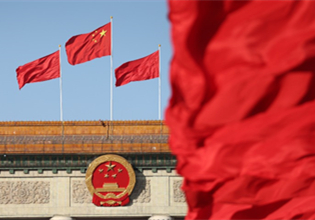Chifeng's sports engine powers regional economic integration
As host of the 11th Traditional Games of Ethnic Groups of Inner Mongolia autonomous region, Chifeng is showcasing an innovative development model that blends culture, tourism, sports, agriculture and commerce, with 18 integrated economic entities boosting across the city.
Celebrated as the ancient heartland of Hongshan culture and the Liao Dynasty (916-1125), the core city of the eastern Inner Mongolia autonomous region is leveraging its unique role as a crossroads of nomadic-pastoral civilizations to drive modern economic growth.

Young performers show their basketball skills before a game of "civilian basketball association" in Yuanbaoshan District of Chifeng, Inner Mongolian autonomous region. [Photo provided to chinadaily.com.cn]
The pre-event excitement began in the city's Yuanbaoshan District with the 17th annual "Min BA (civilian basketball association)" tournament, a grassroots sporting event that has grown into a major cultural and economic driver.
The 22-day basketball festival, kicking off on July 19, attracted more than 30 amateur teams from across China, drawing crowds of fans and tourists, who also explored local agricultural fairs and power plant heritage sites. Last year's tournament brought in 150,000 visitors, generated over one million yuan ($139,000) in tourism revenue, and attracted more than 500,000 viewers online.

A replica of the iconic C-shaped jade dragon, a symbol of Hongshan culture, is displayed at the Yulong Sand Lake scenic area in Ongniud banner, Inner Mongolia autonomous region. [Photo by Guan Xiaomeng/chinadaily.com.cn]
Beyond basketball, Chifeng is making waves in outdoor sports tourism. Ongniud banner, where the iconic C-shaped jade dragon of Hongshan culture was discovered, has developed its Yulong Sand Lake into a desert sports destination featuring cross-country races and cycling events while pursuing national 5A scenic area status.
The city's sport heritage is going global, with Harqin hosting the 2025-26 FIS Snowboard Parallel World Cup. Harqin hosted the event for the first time in 2019, becoming Inner Mongolia's first location to stage an FIS Alpine A-level competition. The banner's signature mountain grape cultivation and wine industry is also thriving, with facilities like accommodation and hot spring mushrooming helping to attract tourists.
The traditional games featured a total of 18 competitive events, encompassing traditional Mongolian sports such as wrestling and horse racing. New additions to the program included shaga (a traditional throwing game using sheep or camel anklebones) and camel polo - both of which symbolically represent the rich heritage of nomadic pastoral culture.
In an even more significant development, organizers have invited UNESCO intangible cultural heritage experts and international sports journalists to discuss plans for promoting the "Three Manly Skills" of the Mongolian ethnic group,—Bokh, or Mongolian wrestling, horse racing, and archery, as a cultural exchange program under China's Belt and Road Initiative.



 Print
Print Mail
Mail





